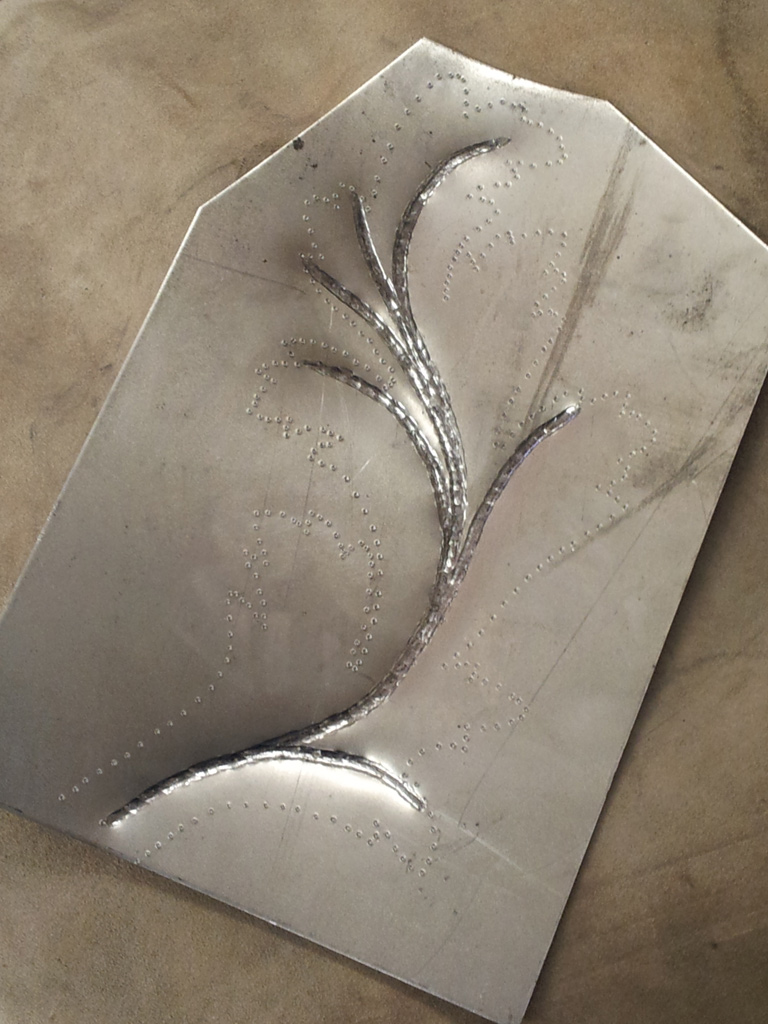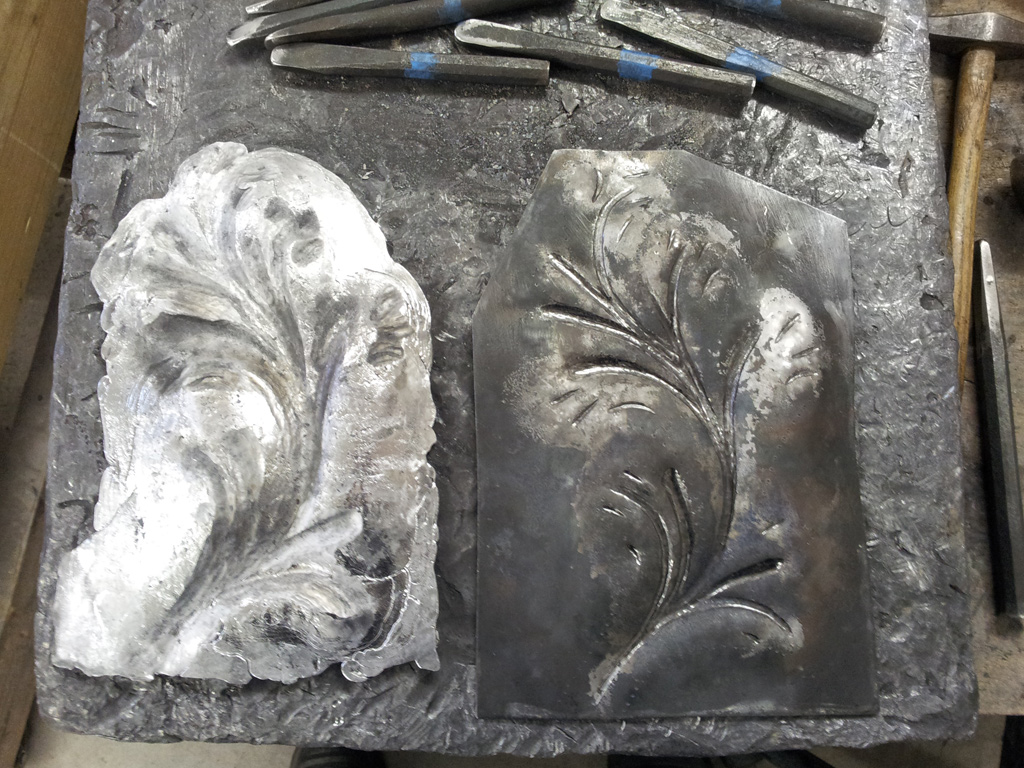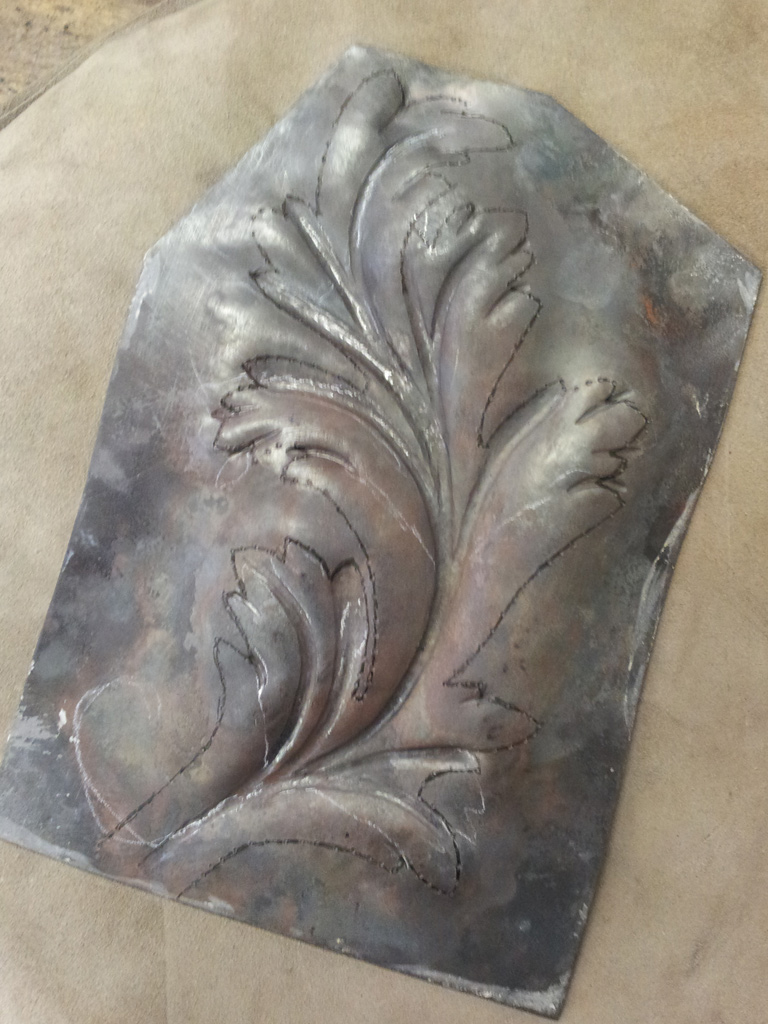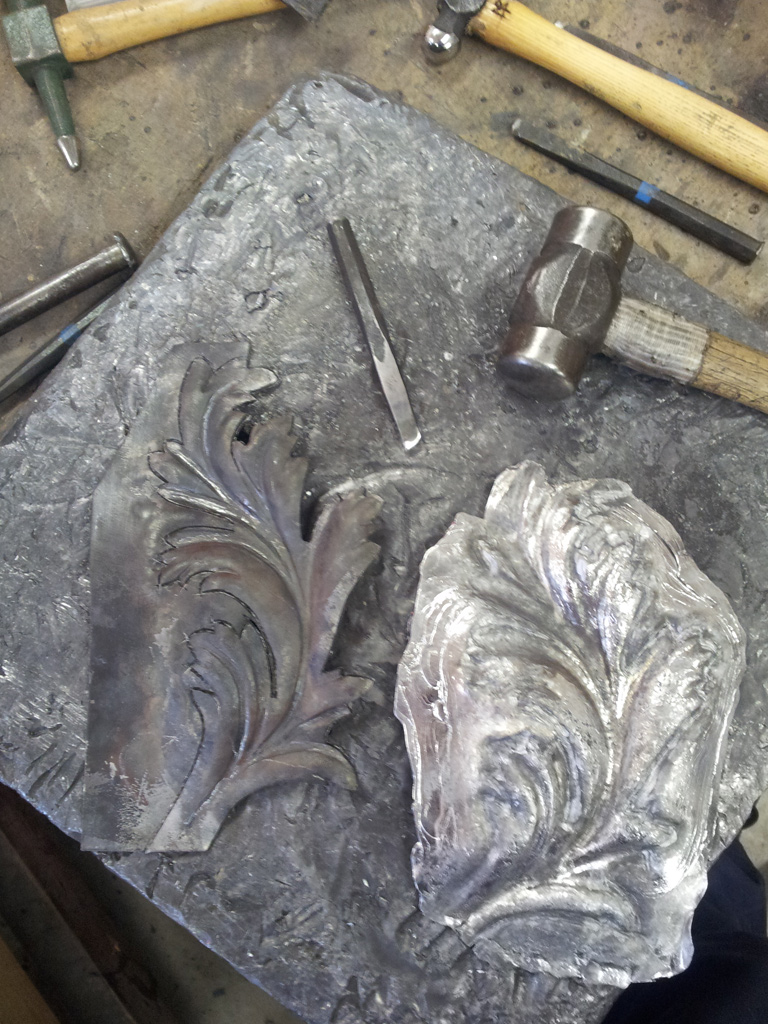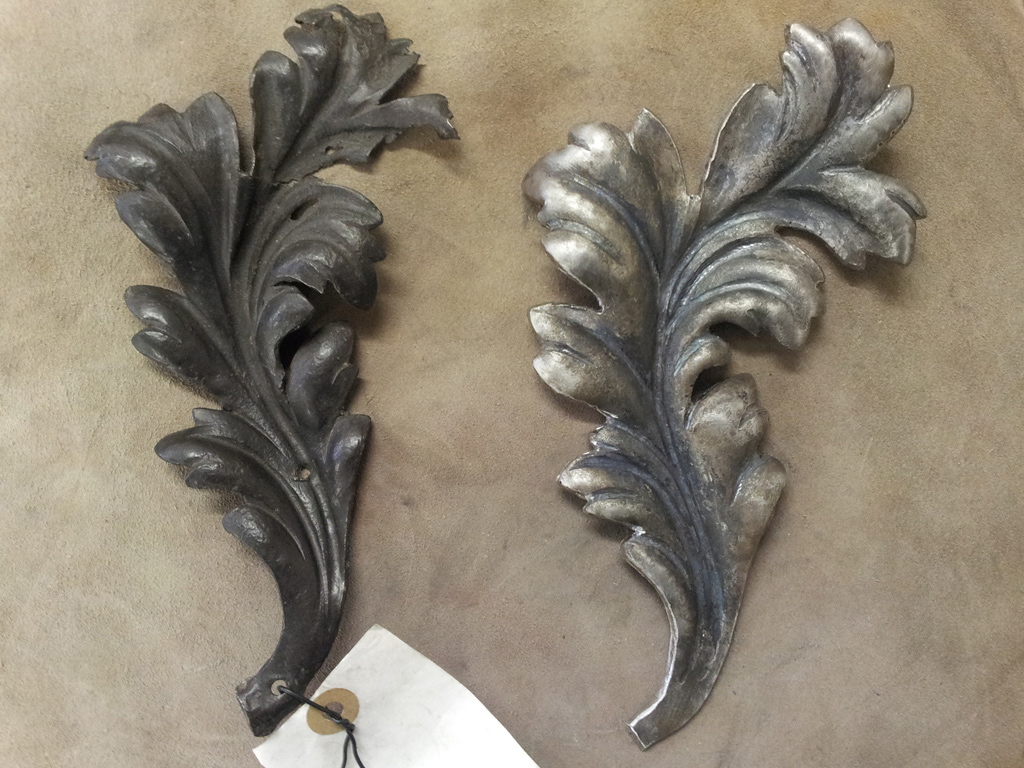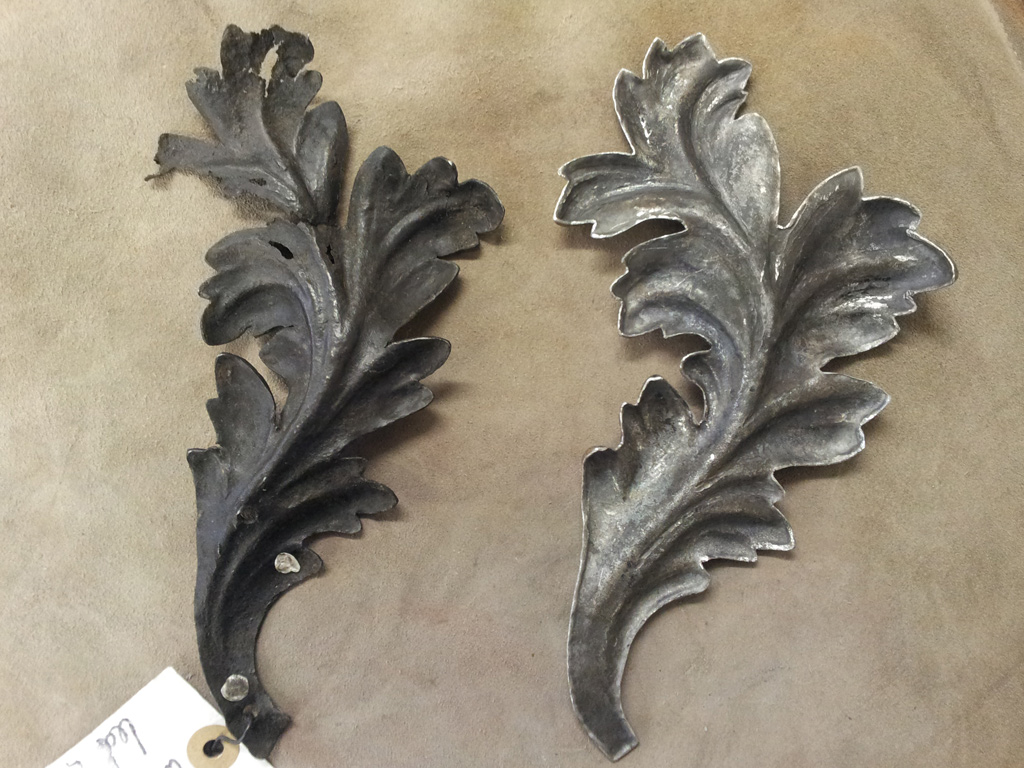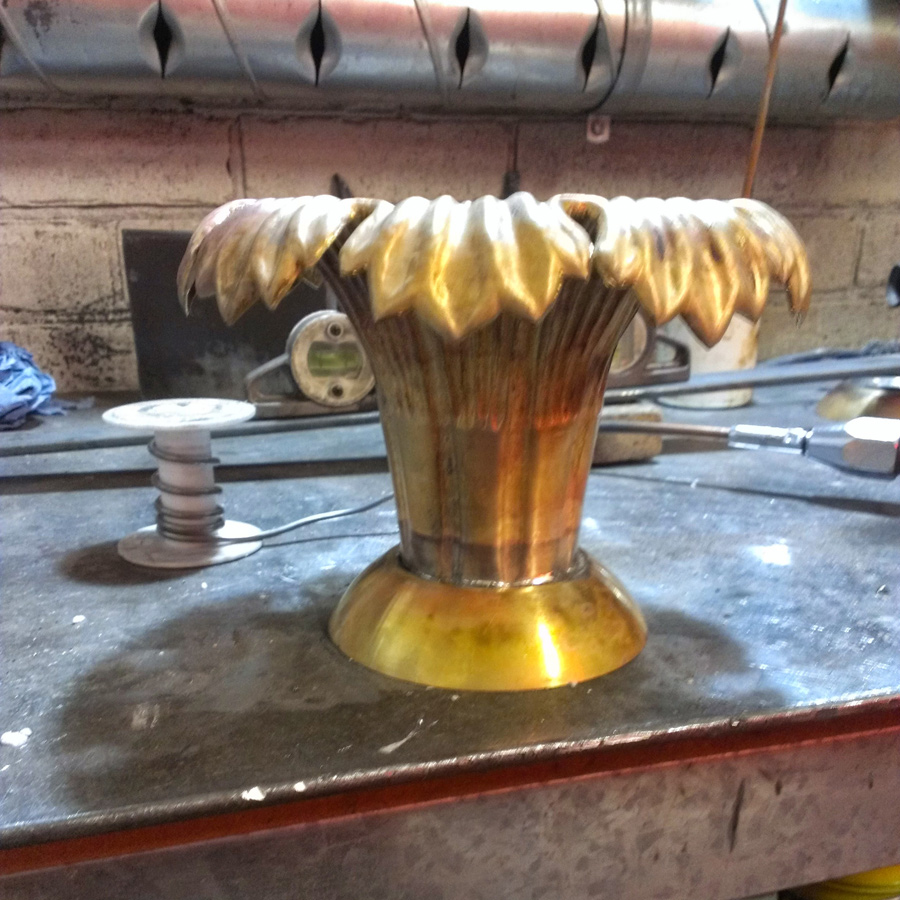Hall Conservation Ltd Research Project
As part of our process, technique and material research at Hall Conservation Ltd, we undertook some detailed studies of repoussé ironwork by Jean Tijou. This was part of the wider conservation works for HRP Hampton Court Palace programme of works on the Tijou Screen.
Based on example repoussé leaves from the HCP archive we attempted to replicate the style and finish of the Tijou ironwork. As modern smiths we do not have ready access to wrought or charcoal iron sheet, we used modern commercially available ‘pure iron’ sheet. As we found, this is a wonderful material for repoussé ironwork as you can create depth and movement as it is softer than mild steel. This reduces cracks and the number of annealing processes.
The art of mimicking other peoples ironwork requires a keen eye and good understanding of the processes. To improve the initial template several iterations are required as the starting shape can vary significantly from the final form. This project required the manufacture of a complete set of punches and chisels to exactly replicate the original line and style. The project was completed using lead as a backing material.
The final two images show the original (left) and the copy (right).

